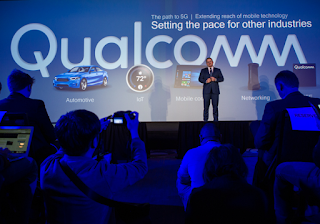TE SubCom will serve as the system supplier for HAFVRUE, a new subsea cable that will link New Jersey to the Jutland Peninsula of Denmark with a branch landing in County Mayo, Ireland. Optional branch extensions to Northern and Southern Norway are also included in the design.
The HAVFRU system will be owned and operated by multiple parties, including Aqua Comms, Bulk Infrastructure, Facebook, and others. Aqua Comms, the Irish cable owner/operator and carriers’ carrier, will serve as the system operator and landing party in U.S.A., Ireland, and Denmark. Bulk Infrastructure of Norway will be the owner and landing party for the Norwegian branch options.
The HAFVRUE subsea cable system will be optimized for coherent transmission and will offer a cross-sectional cable capacity of 108Tbps, scalable to higher capacities utilizing future generation SLTE technology. SubCom will incorporate their Wavelength Selective Switching Reconfigurable Optical Add Drop Multiplexer (WSS-ROADM) for flexible wavelength allocation over the system design life. It is the first new cable system in almost two decades that will traverse the North Atlantic to connect mainland Northern Europe to the U.S.A.
HAVFRUE is the Danish word for mermaid.
Preparation work is underway and system ready-for-service (RFS) is expected in Q4 2019.
“The HAVFRUE cable will provide state-of-the-art connectivity for increasing needs of users, ranging from individual consumers to businesses and the research community. SubCom is proud to be selected as the supplier for this project,” said Sanjay Chowbey, president of TE SubCom.
The HAVFRU system will be owned and operated by multiple parties, including Aqua Comms, Bulk Infrastructure, Facebook, and others. Aqua Comms, the Irish cable owner/operator and carriers’ carrier, will serve as the system operator and landing party in U.S.A., Ireland, and Denmark. Bulk Infrastructure of Norway will be the owner and landing party for the Norwegian branch options.
The HAFVRUE subsea cable system will be optimized for coherent transmission and will offer a cross-sectional cable capacity of 108Tbps, scalable to higher capacities utilizing future generation SLTE technology. SubCom will incorporate their Wavelength Selective Switching Reconfigurable Optical Add Drop Multiplexer (WSS-ROADM) for flexible wavelength allocation over the system design life. It is the first new cable system in almost two decades that will traverse the North Atlantic to connect mainland Northern Europe to the U.S.A.
HAVFRUE is the Danish word for mermaid.
Preparation work is underway and system ready-for-service (RFS) is expected in Q4 2019.
“The HAVFRUE cable will provide state-of-the-art connectivity for increasing needs of users, ranging from individual consumers to businesses and the research community. SubCom is proud to be selected as the supplier for this project,” said Sanjay Chowbey, president of TE SubCom.
- In September 2017, construction was completed on the 6,600 km MAREA subsea cable, which was jointly funded by Microsoft and Facebook. MAREA links Virginia Beach, Virginia to Bilbao, Spain. The cable will be managed by Telxius, Telefónica’s new infrastructure company. The cable features eight fiber pairs and an initial estimated design capacity of 160 Tbps. MAREA takes a more southern route than other transatlantic cables, which mostly connect northern Europe to the New York/New Jersey region.





















